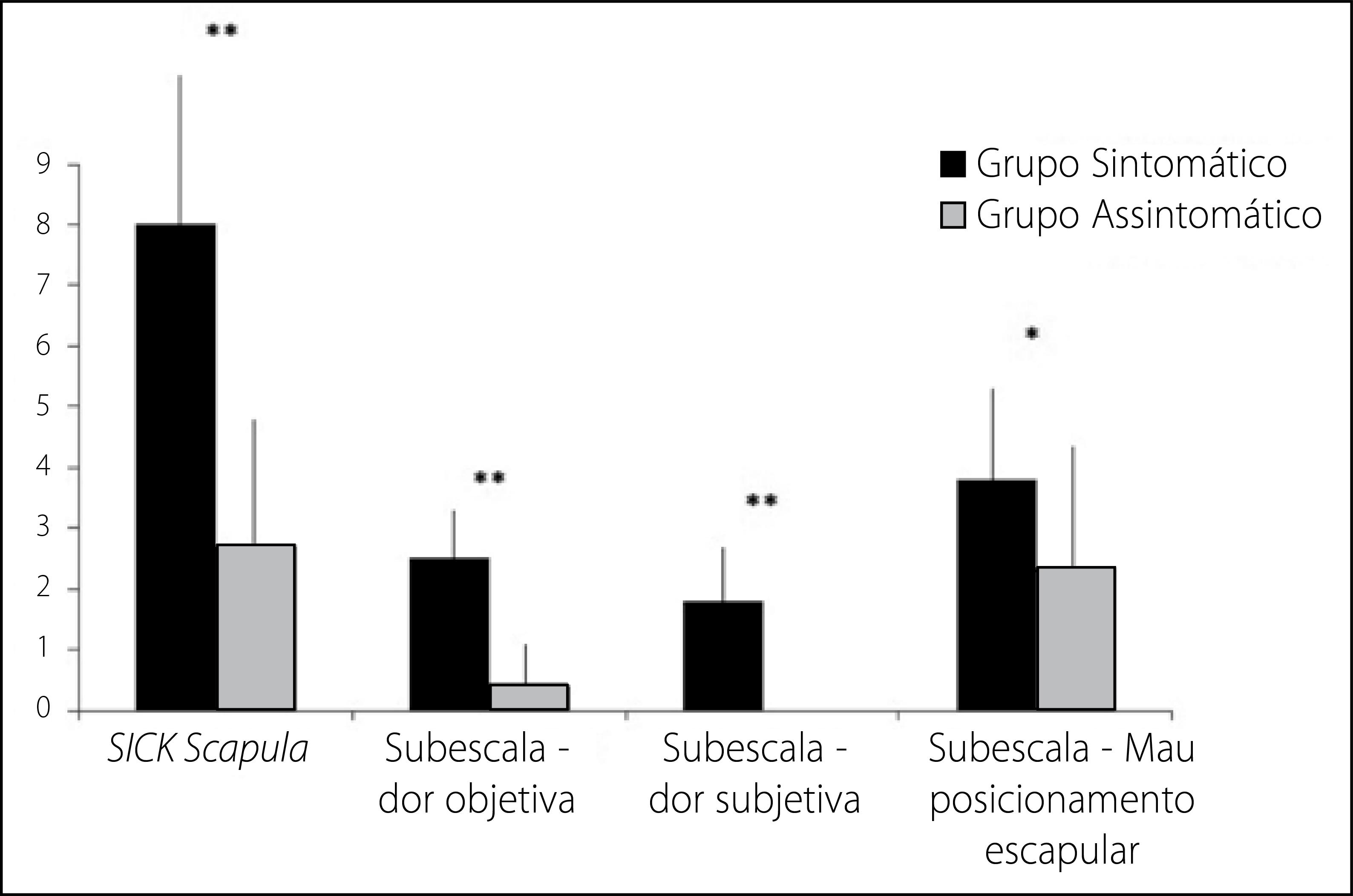INTRODUCTION:
The scapular dyskinesia is defined as a change in scapular position, both dynamic and static, resulting from periscapular imbalances secondary to muscle fatigue, trauma or neurological injury. The SICK Scapula statically evaluates and characterizes the scapular changes, ranging from 0 to 20 (0 = best). This exam addressed three aspects: objective pain, subjective pain and scapular malposition.
OBJECTIVE:
To compare the SICK Scapula in symptomatic and asymptomatic handball players.
METHODS:
The sample consisted of 57 handball athletes divided into two groups according to the presence of shoulder pain: asymptomatic group (AG) (N = 27) and symptomatic group (SG) (N = 30). The SICK Scapula score has been reported among athletes, both in relation to the total score and its subscales. The GS had a significantly higher score than the GA (8±2.3 vs. 2.7±1.8; p<0.001).
RESULTS:
In the subscales, GA and SG also showed significant differences in subjective pain (0 vs. 1.73±0.83, p<0.001), objective pain (0.41±0.64 vs. 2.5±0.86, p<0.001) and scapular malposition (2.3±1.9 vs. 3.7±1.5, p=0.002).
CONCLUSION:
The handball athletes with throwing-related pain have a higher score with respect to pain and changes of scapular positioning, as assessed by SICK Scapula, compared with those who did not have symptoms.
shoulder pain; scapula; dyskinesias; sports medicine; athletes


